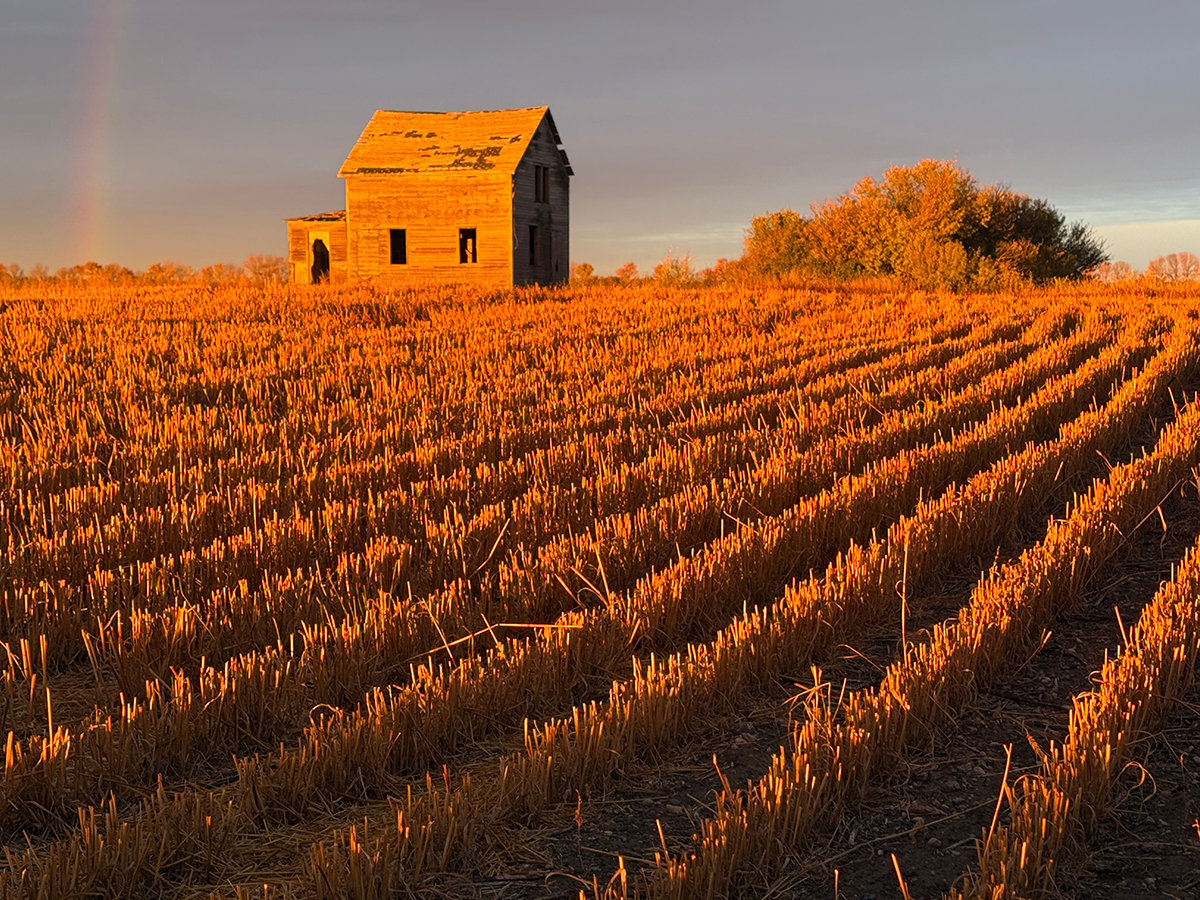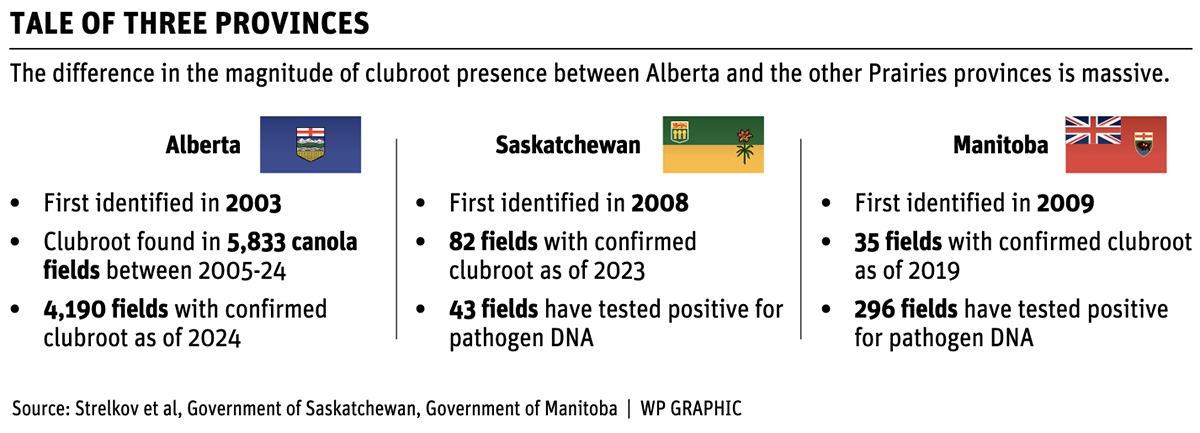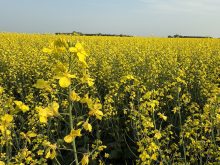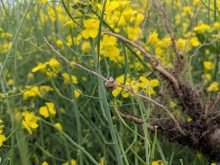WINNIPEG — There are now 55 different types of clubroot across the Prairies.
About a decade ago, in 2016, the number of pathotypes was 17.
The increasing number of variants of the soil-borne disease is a concern, but canola growers need to remember that most of these pathotypes are rare, said Steve Strelkov, a plant pathologist at the University of Alberta.
Read Also

Forecast leans toward cooling trend
July saw below average temperatures, August came in with near to slightly above average temperatures and September built on this warming trend with well above average temperatures for the month.
“It (the population) is still dominated by a handful of pathotypes,” said Strelkov, who spoke earlier this month at CanolaWeek in Saskatoon.
Clubroot affects crucifers such as canola, causing galls or swellings to form on the roots of plants, according to the Canola Council of Canada website.
“Severely infected roots can’t transport adequate water and nutrients to aboveground plant tissues. This can result in wilting, reduced seed production, stunting and possibly premature death of the plant.”
Strelkov said he and other researchers at the U of A and the provincial government looked at 691 canola fields in Alberta this year and found clubroot in 307 of them.
Of that, 167 cases were in fields with no history of the disease.
It is now present in 47 of Alberta’s 66 counties and municipal districts.
While clubroot continues to spread in the province, the number of detections in Saskatchewan and Manitoba is relatively low:
- From 2008-23, only 82 fields had confirmed cases of clubroot in Saskatchewan
- From 2009-19, there were 35 confirmed cases in Manitoba.
- In Alberta, from 2005-24, there have been 4,190 fields with cases of clubroot.
The difference in magnitude between Alberta and the other provinces is massive. It could be connected to soil pH because clubroot spores prefer acidic soil.
“In Alberta, we have a much higher percentage of acidic soils,” Strelkov said.
Alkaline soils can reduce the severity of clubroot, but it doesn’t stop the disease or prevent symptoms on canola plants, says the canola council website.
“While the risk may be lower, high pH does not mean immunity. Plus, pH is often highly variable in a field. Fields can have patches with lower pH,and clubroot could take hold within those patches.”
Another explanation for the rarity of clubroot in Manitoba and Saskatchewan is that the disease arrived in those provinces five years later than Alberta. By that time, around 2009, canola breeders and the seed industry had developed hybrids with genetic resistance to clubroot.
The increasing number of clubroot pathotypes in Alberta could simply be evolution as the soil disease responds to canola that has genetic resistance.
“By growing those resistant varieties, we’re maybe selecting for a rare element of the (clubroot) population,” Strelkov said.

From 2021-23, researchers at the U of A tested 206 fields, mostly in Alberta, and found an additional 31 unique pathotypes.
Of the 55 types of clubroot now identified in Canada, 35 can overcome the genetic resistance in some clubroot resistant canola.
That sounds bad, but most of the troublesome variants are rare and only found in a few fields.
What is worrisome, however, is that a couple of problematic pathotypes are starting to gain ground.
Most of the clubroot in Alberta falls into three variants, known as 3A, 3D and 3H. They represent 57 per cent of the total population.
“(But) they’re not as predominant as they once were,” Strelkov said, adding that in 2020 they were 70 to 75 per cent of all pathotypes.
Those variants of clubroot are decreasing and other types, called 9D and 9E, are becoming more common.
“Isolates from 9D, they could cause severe clubroot on all hosts that we tested,” Strelkov said.
“Those pathotype 9s variants are something to look out for.”
















